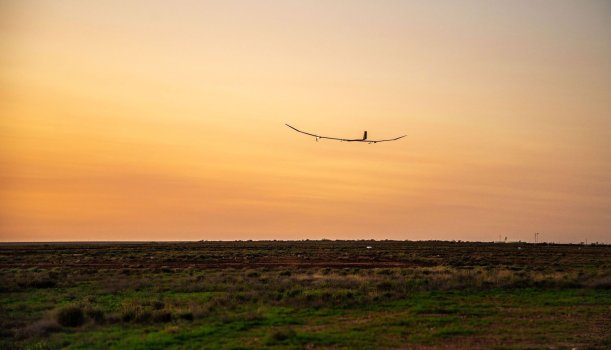K
Kathleen Martin
Guest
Traditional drones and satellites for military surveillance could be joined by the PHASA-35: a new uncrewed aircraft developed in the UK that flies in the stratosphere— a part of the atmosphere unencumbered by other aircraft or satellites.
“It stays up for a long while and it can look a long way—those are two of the real key attributes for a surveillance platform,” notes Drew Steel, an aviation adviser for BAE Systems, the company that is developing the system after acquiring it from its initial designers at the British company, Prismatic.
PHASA-35 stands for “Persistent High Altitude Solar Aircraft.” The number 35 is its wingspan in meters: that’s 115 feet, as wide as those of a Boeing 737. But the carbon fiber aircraft weighs a mere 330 pounds, which is one three-thousandth the weight of the 737.
The drone is a high-altitude long-endurance (HALE) unmanned air vehicle that runs on solar-powered electric engines during the day, and lithium-ion batteries at night. It’s designed to fly at an altitude of about 65,000 feet in the stratosphere, the layer between Earth’s atmosphere and space. For comparison, a passenger aircraft flies no higher than 42,000 feet. Because the air there is about a thousand times thinner than it is closer to the Earth, the aircraft’s wings have to be extremely long to keep it airborne.
Steel says that “the solar power enables [the PHASA-35] to stay airborne for up to a year and at 65,000 feet, it’s above all the traffic and most of the weather, so it can look a long way.”
Continue reading: https://www.popsci.com/technology/solar-powered-drone-will-fly-stratosphere/
“It stays up for a long while and it can look a long way—those are two of the real key attributes for a surveillance platform,” notes Drew Steel, an aviation adviser for BAE Systems, the company that is developing the system after acquiring it from its initial designers at the British company, Prismatic.
PHASA-35 stands for “Persistent High Altitude Solar Aircraft.” The number 35 is its wingspan in meters: that’s 115 feet, as wide as those of a Boeing 737. But the carbon fiber aircraft weighs a mere 330 pounds, which is one three-thousandth the weight of the 737.
The drone is a high-altitude long-endurance (HALE) unmanned air vehicle that runs on solar-powered electric engines during the day, and lithium-ion batteries at night. It’s designed to fly at an altitude of about 65,000 feet in the stratosphere, the layer between Earth’s atmosphere and space. For comparison, a passenger aircraft flies no higher than 42,000 feet. Because the air there is about a thousand times thinner than it is closer to the Earth, the aircraft’s wings have to be extremely long to keep it airborne.
Steel says that “the solar power enables [the PHASA-35] to stay airborne for up to a year and at 65,000 feet, it’s above all the traffic and most of the weather, so it can look a long way.”
Continue reading: https://www.popsci.com/technology/solar-powered-drone-will-fly-stratosphere/

